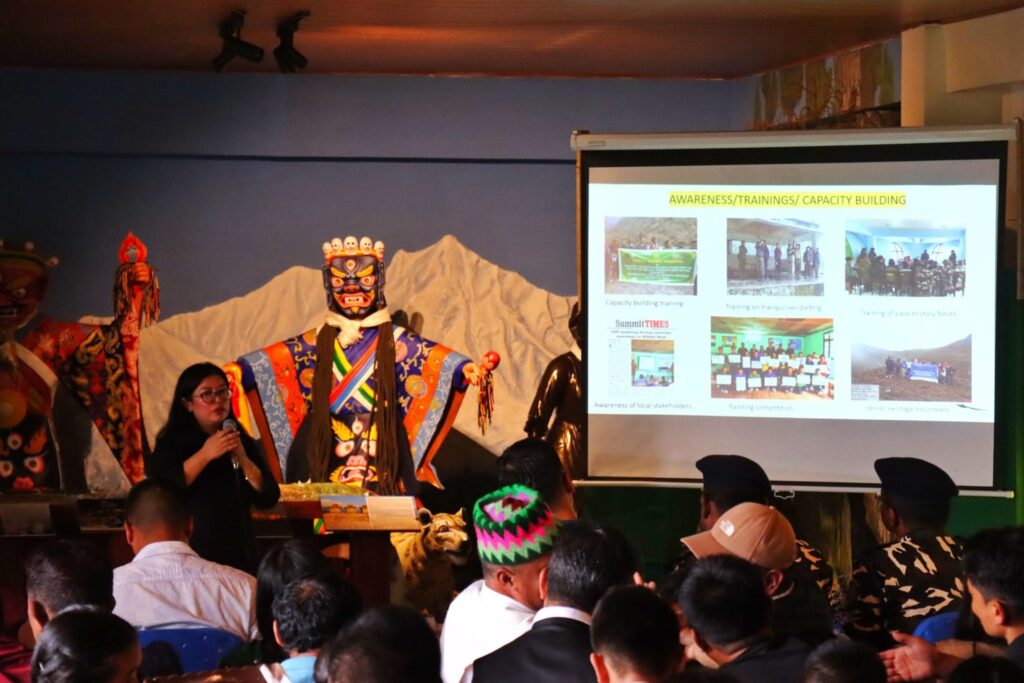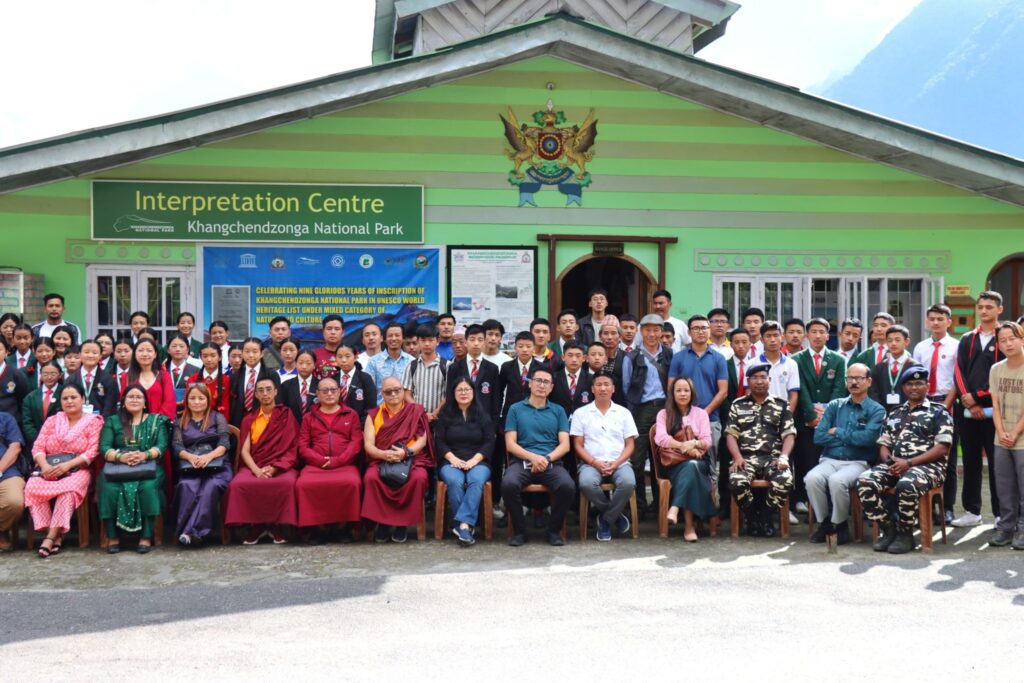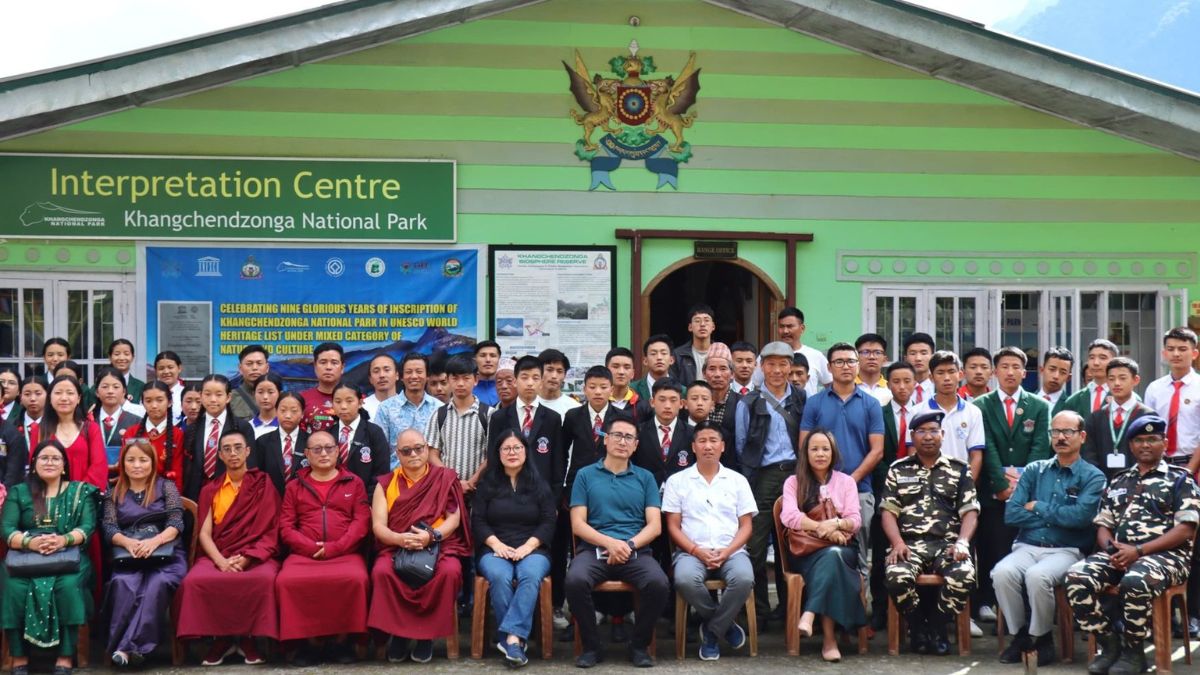Gyalshing, July 17, 2025:
Nine years ago, on July 17, 2016, the majestic Khangchendzonga National Park (KNP) earned a place on the world map as India’s first and only Mixed UNESCO World Heritage Site. Nestled in the heart of Sikkim, KNP is not only a paradise of snow-clad peaks, alpine meadows, and vibrant forests, but also a sacred cultural landscape deeply rooted in the traditions of the Lepcha and Bhutia communities.
To mark this proud milestone, the KNP/KBR Gyalshing Division of the Forest and Environment Department, Government of Sikkim, celebrated the 9th Inscription Day with a strong focus on conservation, biodiversity, zero waste, and local community engagement.
Table of Contents
Khangchendzonga National Park: A Day of Celebration and Conservation Talk
The event, held at Yuksom, was graced by Mr. Nandu Gurung, President of the Constituency Level Committee (CLC), as the Chief Guest. In his speech, he lauded the park’s management for promoting eco-tourism, waste management, and livelihood opportunities like birdwatcher and guide training.
KNP 9th Inscription Day: Key Highlights

- Ms. Bhumika Rai, Divisional Forest Officer (KNP/KBR), presented an overview of the park’s conservation efforts, community initiatives like Himal Rakshaks, and the need for raising awareness about ecological values.
- Mr. Jigmee Chewang Bhutia, DFO (Territorial), proudly announced the inclusion of Khecheopalri Lake as a Ramsar Site and emphasized the role of the Forest Conservation Act, 1980.
- Experts from WWF, ICAR, and BAMOS-NCS shared insights on the park’s rich biodiversity, including:
- 21 snow leopards identified in the region.
- Rare orchids like Cymbidium whiteae.
- Over 400 butterfly species and a variety of birds.
- Mr. Tsheten Tashi Bhutia of the Resource Recovery Centre (RRC) – Yuksom raised awareness about plastic pollution and shared how local communities are embracing zero-waste goals.
- A panel discussion addressed the growing human-wildlife conflict, especially involving wild boars, with forest officials and local panchayats seeking collaborative solutions.
Khangchendzonga National Park UNESCO Status: A Historic Recognition
Khangchendzonga National Park became a UNESCO World Heritage Site in 2016, not only for its rich biodiversity but also for its cultural and spiritual significance. The nomination was supported by the Sikkim Government, local conservation groups, and indigenous communities who consider Mt. Khangchendzonga sacred.
The park was recognized under the “mixed category” — a rare honor that acknowledges both natural beauty and cultural heritage. It’s considered one of the few sites globally that showcase nature and spirituality living in harmony.
Area and Geography
- Total Area: 1,784 km²
- Buffer Zone: 114,712 hectares
- Altitude Range: From 1,220m to 8,586m, covering tropical forests to glacial landscapes.
- Location: Spreads across West, North, and South Sikkim districts.
Vegetation and Ecosystems
Khangchendzonga National Park covers several ecological zones:
- Subtropical forests with oak, maple, and birch.
- Temperate forests rich in conifers and rhododendrons.
- Alpine meadows (Bugyals) with wildflowers.
- Glacial zones with rugged landscapes.
Over 1,580 species of vascular plants and 422 medicinal plants are found here. Many orchids are endemic, and some are protected under CITES.
Wildlife Wonderland
Khangchendzonga National Park is home to:
- 124 species of mammals, including:
- Snow Leopard
- Red Panda
- Himalayan Black Bear
- Musk Deer
- Clouded Leopard
- 300–550 species of birds, including:
- Satyr Tragopan
- Himalayan Monal
- Blood Pheasant
- Over 400 butterfly species and various reptiles and amphibians.
The WWF team’s finding of 21 snow leopards is a proud achievement for such a small state with limited altitude habitats.

Culture and Spiritual Connection
The park is sacred to both Lepcha and Bhutia communities. For the Lepchas, the region is known as Mayel Lyang (hidden paradise). For Buddhists, it’s a part of the “beyul” tradition—hidden sacred landscapes that offer spiritual refuge.
Zero Waste & Sustainability
Sikkim is known for its green policies, and the Resource Recovery Centre (RRC) in Yuksom is leading by example. Talks during the event emphasized plastic-free living, eco-tourism, and the importance of youth participation in conservation.
Also Read: TTF Kolkata 2025: Sikkim Unveils Breathtaking Destinations That Will Leave You Speechless!
Why KNP Matters?
- It is a UNESCO treasure and a living example of how people, culture, and nature can coexist.
- It’s one of the few national parks in the world that covers such a wide range of altitudes and biodiversity.
- It provides not just ecological services but also spiritual nourishment, livelihood, and identity to the people of Sikkim.
The 9th Inscription Day celebration was not just a birthday of sorts for the park—it was a reminder of our collective duty to protect this global heritage site. The collaborative efforts of the Forest Department, WWF, local villagers, monasteries, and youth volunteers are creating a powerful movement for sustainable conservation in the Himalayas.

